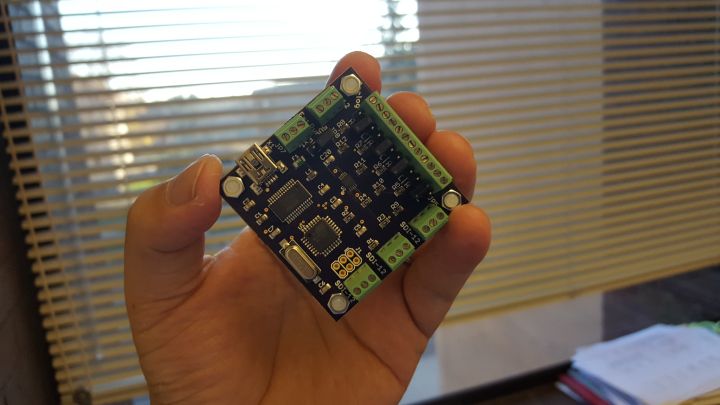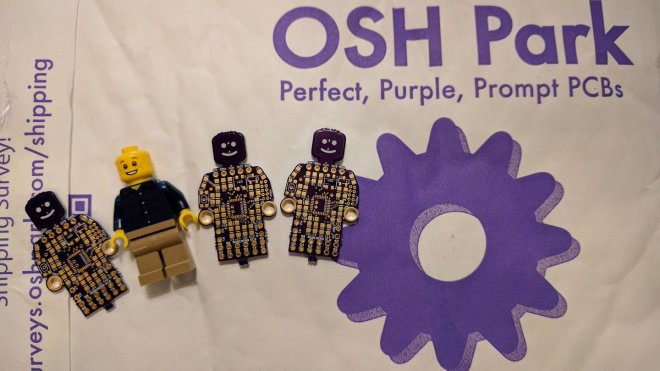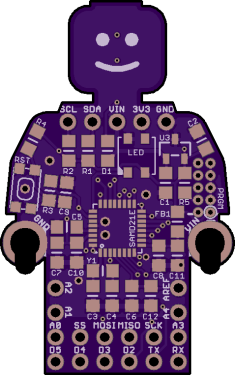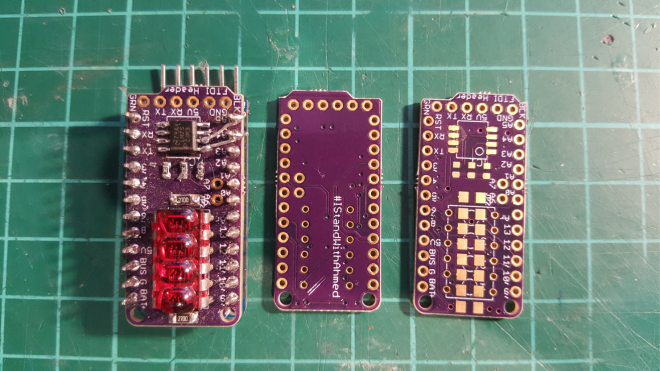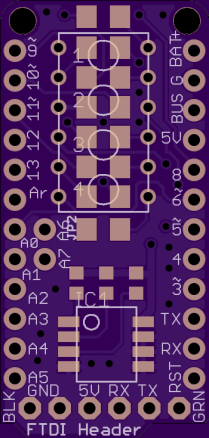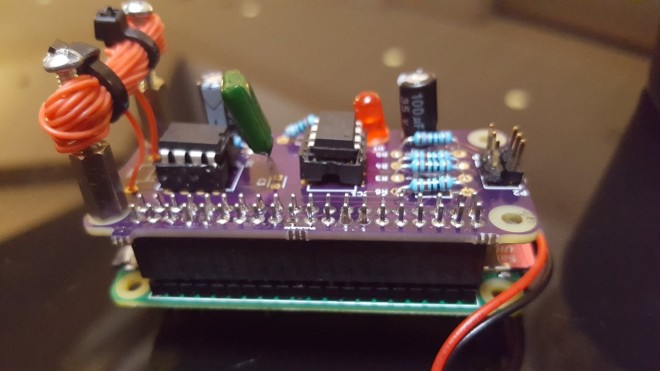So finally the boards and parts are here and I built the first batch of 3 boards (purple as in oshpark.com). Here is a photo of one of them with my hand as size reference: This board is twice the size of the original SDI-12 USB adapter and features the following additional features: 4 SDI-12
Month: November 2016
The Final 10 Entries of the 2016 Hackaday Prize
It has been quite a ride this year, watching entries pour in during the five challenges of the 2016 Hackaday Prize. Our yearly engineering initiative is designed to focus the skill, experience, and creativity of the world’s tinkerers, hackers, designers, and fabricators to build something that matters: things that change lives.
via The Final 10 Entries of the 2016 Hackaday Prize — Hackaday
Put That Amateur Radio License to Use on 915 MHz
Amateur radio enthusiasts in the US will be interested in Faraday, an open-source digital radio that runs on 915 MHz, which amateur radio enthusiasts may know better as the 33 cm band. You can transmit on 915 MHz without a license (in the US), taking advantage of the Industrial, Scientific, and Medical (ISM) exemption.
via Put That Amateur Radio License to Use on 915 MHz — Hackaday
Building an ARM based microcomputer at home
Having my reflow solder oven finished, I couldn’t wait to see how far can I challenge it with complex circuit boards and tiny components. I decided to build a system with components that are tricky to solder, such as BGA and QFN packages. Not interested in designing the whole circuit on my own, I […]
via Building an ARM based microcomputer at home — HELENTRONICA
Minifigure Atmel SAMD21 Board
Benjamin Shockley designed this adorable Atmel SAMD21 dev board in the shape of Lego mini-figures!
This circuit board was designed as a fun project for a SAMD21E microcontroller based development board. The circuit design follows the recommended design from the SAMD Datasheet.
The design files are shared on GitHub:
 bwshockley/Minifigure-SAMD21E
bwshockley/Minifigure-SAMD21E
bwshockley has shared the board on OSH Park:
Minifigure SAMD21 Board
Building an ATmega328 uploader

Carlos of GlowSaber wrote a great blog post on how we built an AVR programmer shield:
Building an ATmega328 uploader
As I learned more about Arduino, I realized that it is possible to redesign the GlowSaber around the ATmega328 chip [..] I designed an Arduino Shield that can be used to burn the bootloader and upload programs to an ATmega328 chip.
Here’s a example of an ATmega328 in a custom board:
cvadillo shared the board on OSH Park:
Arduino ISP Breakout shared project
Arduino Pro Trinket Bubble Display
davedarko wrote in his LED displays on Arduinos – a collection project log on hackaday.io:
Arduino Pro Trinket – bubble display
With 4 of HP QDSP-6064 bubble displays in a drawer I felt ready to do something with them and the “Clocks for Social Good” – call on hackaday.com finally got me going
The design files are available on GitHub:
FixieTube Clock
davedarko’s mum gave him some small jam jars and it inspired him to design this clock:
FixieTube clock
30ml jam jars hopefully turned into beautiful LED displays – nixietube like looking without the higher voltage fuzz – fake LED nixietubes
The design files and source code are available on GitHub:
 davedarko/FixieTubes
davedarko/FixieTubes
Here’s a video of the clock in action:
MagSpoof for Raspberry Pi
Be able to make & upload MagSpoof with variable tracks, to use it without Arduino dependencies, and implement it on the same Raspberry GPIO.
More details are available on Salvador’s blog.
The makefile and the modified MagSpoof library are avialabel on GitHub:
 MagSpoofPI
MagSpoofPI
Intel Quark D2000 Environmental Sensors Board
Intel Quark D2000 Environmental Sensors Board
The board can be used to monitor the environment conditions, and store or transmit the data to a remote system for further processing.
- 32-bit x86 processor core
- 25 GPIO pins
- Support for UART, PWM, I2C, SPI, JTAG
- 32 KiB of the instruction Flash ROM
- 8 KiB of the SRAM
- Accelerometer and Magnetometer
- Atmospheric Pressure, Humidity and Temperature Sensor
- Ambient Light Sensor
Serge has shared the board on OSH Park:

